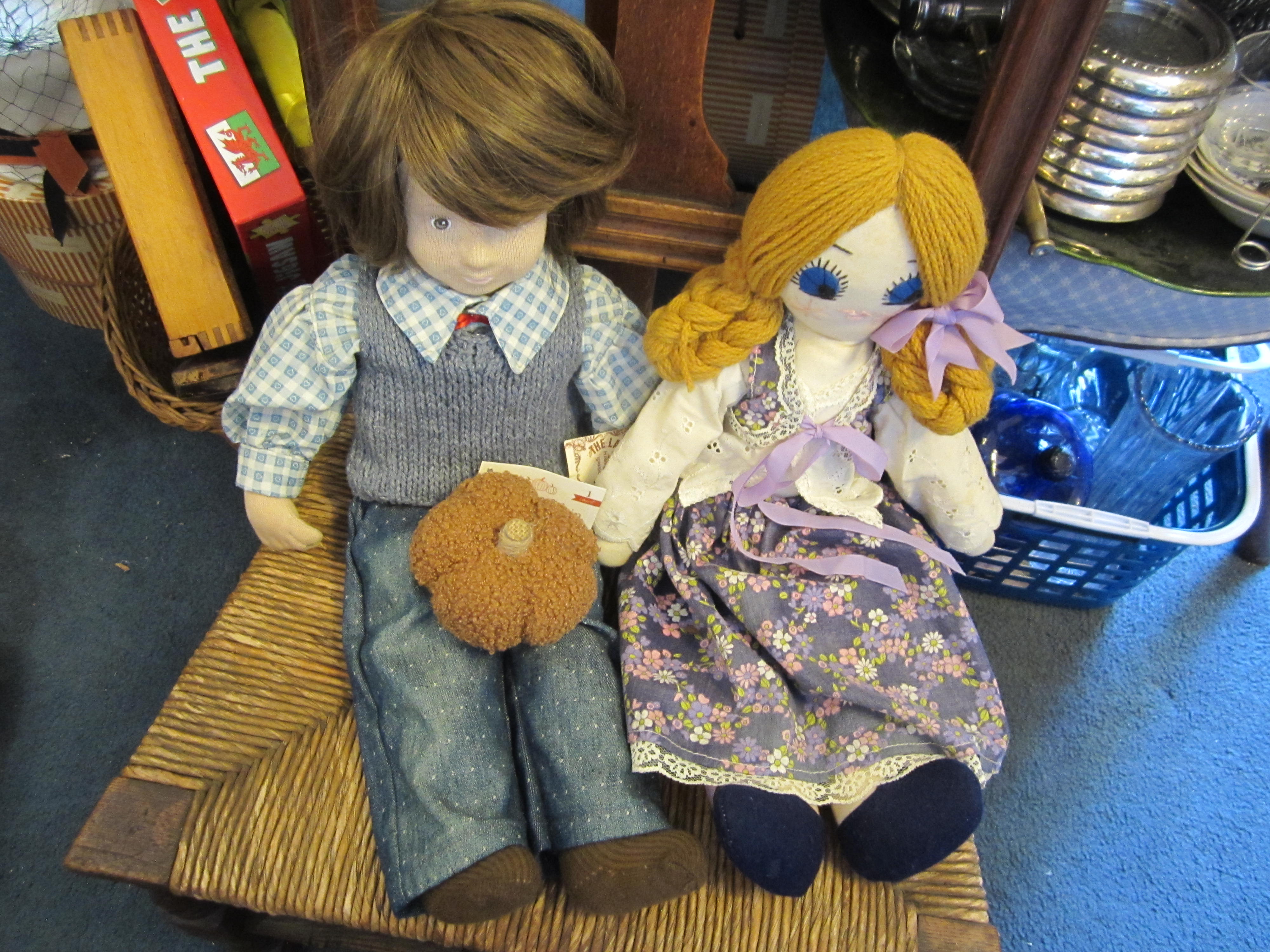Antiquing can be a haunting experience

A common misconception with regards to a haunting is that the experience takes place within a facility such as a house, school, hospital, or any other type of structure. Not many people are aware that items such as furniture, paintings, clothes, jewelry, pottery or even dolls can serve as an attachment for a spirit.
On a recent visit to Orinda Village Antiques, owner Susan Leech discussed the whys and wherefores of how spiritual attachments can be found with inanimate objects. “An object that has been designed by a person – handcrafted to create something beautiful – is a gift from that person,” she explained. “A piece of them is in that item. An artist of any description puts a good deal of themselves into any piece they are creating and some would call it 'positive energy.'”
According to “Ghosts of Inanimate Objects” by Kerriann Flanagan Brosky (an award-winning author whose books have included the subject of hauntings), “Ghosts of inanimate objects are quite unusual and are very often misunderstood, with visions of the infamous ‘Chucky’ doll coming to mind. Believe it or not, ghosts of inanimate objects are recognized as a type of ghostly phenomenon like any other type of haunting.”
Brosky added, “One thing that needs to be cleared up is that the object itself is not haunted. In most cases there is a spirit attached to the object who is using the object as a means of communication. In other cases, there is residual energy left behind on an object which can make it appear as if it is haunted.”
Leech likes to refer to her antique store as “an adoption agency.” There have been mornings when she has arrived to open the shop only to find that someone has left items on her doorstep – like giving up a baby for adoption. “Not everyone is able to be a good caregiver, so they bring their items to me in the hopes that I will find them a good home. I always get thank you notes from people that have given me their things.”
Cherished heirlooms such as these may contain the previous owner’s energy, but Brosky admits that in some cases, “it may be an actual spirit who is causing the phenomenon to the object. If a spirit has not crossed over, or even if a spirit comes back to simply visit, they may go back to objects that were once important to them while on the earth plane. That is why another common haunted object is a chair; a chair that is always sat in by one person, a chair that was a special gift, a chair that just could not be thrown away. It would make sense then if a relative who is in spirit form who comes to check on us, takes up temporary residence in that familiar old chair, causing it to move or rock. To us though, it would appear to be ‘haunted.’ You may also find that when photographed, certain objects may have orbs around them. Again, this could simply be a spirit coming back for a visit.”
Another example of spiritual connection to an object is a small, hand-painted dish for sale at Orinda Village Antiques. An old written note taped to the back states: “In 1919, Elsa + her sister Helen were given a few cents to buy meat + sometimes 1 pickle for a sandwich to take to school for lunch. We saved by doing without so we could buy our mother this Christmas surprise present.” The sacrifice the two sisters made in order to buy their mother a beautiful gift from the heart is a wonderful correlation that also explains how an item that meant something dear to someone could experience a happy attachment.
“In some situations, we obtain items that we don’t know where it came from or the history behind it, such as when we buy things from antique stores,” stated Brosky. “We don’t know if there is energy or imprints attached to these items. Nor do we know if its past owner, possibly now in spirit form, was willing to give the item up. I’m not saying to never buy antiques, I’m just giving you a warning that anything is possible.”
At this point in time, Leech does not have anything in her shop that constitutes a disruptive haunting, although during her 40-plus years at the same location she has experienced moments of a phenomenon or two. “Selling antiques is a connection with life and experiences that people have gone through,” she said. “When people take these objects home they have another life – people take these home because they make them happy.”
Orinda Village Antiques is located at 107 Orinda Way. For more information email: orindavillageantiques@gmail.com or call (925) 254-2206 or (925) 788-7626.
